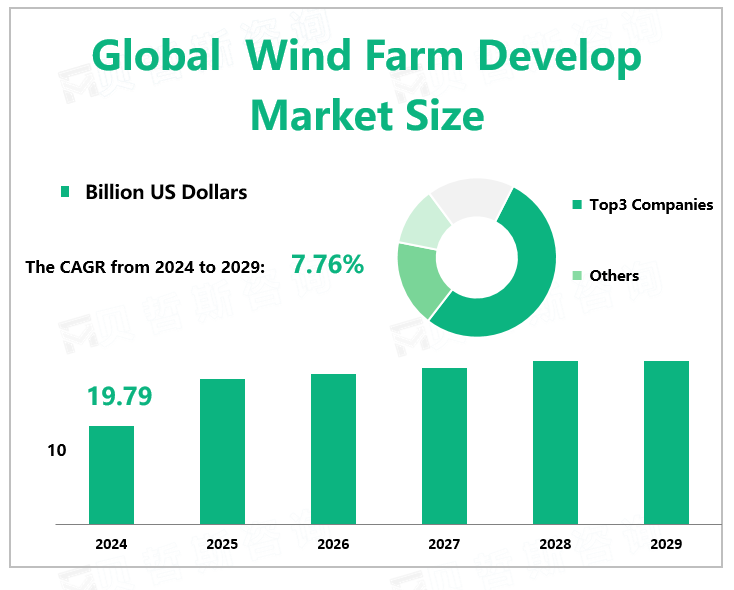Global Wind Farm Develop Market Overview
According to Global Market Monitor, the global wind farm development market size will reach $19.79 billion in 2024 with a CAGR of 7.76% from 2024 to 2029.Wind energy is a safe, renewable energy source that provides an excellent alternative to fossil fuels used to generate electricity, such as coal and natural gas. Wind energy developers search out opportunities and appropriate sites to build large-scale wind energy developments.
Market Status
With the development of electric power, wind power found new applications in lighting buildings remote from centrally-generated power. Throughout the 20th century, parallel paths developed small wind plants suitable for farms or residences, and larger utility-scale wind generators that could be connected to electricity grids for remote use of power. Today wind-powered generators operate in every size range between tiny plants for battery charging at isolated residences, up to near-gigawatt-sized offshore wind farms that provide electricity to national electrical l networks.
Market Trends
On April 16, 2024, the Global Wind Energy Council (GWEC) released its Global Wind Energy Report 2024. According to the report, a record 117GW of new wind power capacity was added worldwide in 2023, the best year ever. Despite the volatile political and macroeconomic environment, the wind industry is entering a new era of accelerated growth, as reflected in the historic COP28 adoption of a target to triple renewable energy again by 2030.

The cumulative global wind power installed capacity in 2023 exceeded the first TW milestone, with the total installed capacity now reaching 1,021 GW, an increase of 13% year-on-year. The top five global markets are China, the United States, Brazil, Germany, and India. China's new installed capacity reached 75GW, a new record, accounting for nearly 65% of the world's new installed capacity. Latin America also experienced record growth in 2023, up 21% year on year, with Brazil ranking third globally with 4.8 GW of new installations.
While more than 10 percent of U.S. electricity comes from wind power, the vast majority is generated by land-based turbines, and the U.S. offshore wind market is at least a decade behind more established markets in countries like the United Kingdom and Denmark. Achieving a net-zero carbon electricity sector in 43 states in the United States may require about 2,000 GW of installed wind and solar capacity, however, the evolving technical, social, and market factors for wind energy mean that future deployment patterns and associated impacts are likely to be very different from the past and present.
|
Germany |
28% |
|
Spain |
32% |
|
Britain |
25% |
|
Denmark |
55% |
|
America |
13% |
|
China |
11% |
|
Sweden |
16% |
Table: Share of wind power in total electricity consumption by country
We provide more professional and intelligent market reports to complement your business decisions.